Reading Time:
Pathology
Infection of the meninges
Viral disease is self-limiting, bacterial can be fatal
Aetiology
Neonates: Streptococcus. B, E.coli
Adults: Strep. pneumoniae, N. meningitidis
Elderly: Listeria
Other: Viral infections and TB
Signs
Kernig’s Sign Positive: Thigh flexed at hip and knee to 90 degree, and subsequent
knee extension is painful
Brudzinski Sign Positive: Hip and knee flexion on neck flexion
Symptoms
Fever, chills, headache, photophobia, neck stiffness, vomiting and changes in mental state. Non-blanching rash.
Investigations
Imaging: CT or MRI brain
Other: Lumbar puncture, gram stain, PCR, and blood cultures
Treatment
Medical: IV ceftriaxone immediately in suspected cases
IV vancomycin and ampicillin in elderly and immunocompromised.
4 days dexamethasone in pneumococcal meningitis alongside antibiotics
If viral cause potential IV acyclovir should be given
Prevention: Meningococcal and Pneumococcal vaccine
Chemoprophylaxis (ciprofloxacin, rifampicin) in close contacts
Prognosis
Prognosis is dependent on early diagnosis and commencement of antibiotic therapy. There is increased risk of both mortality around 10% and morbidity of around 30%
Acute: Seizures, cerebral abscess, stroke, DIC, gangrene, coma, death
Long term: Deafness, cognitive impairment and focal deficits
Key Facts
Lorem ipsum dolor sit amet, sapien platea morbi dolor lacus nunc, nunc ullamcorper. Felis aliquet egestas vitae, nibh ante quis quis dolor sed mauris.
Key Images
Lorem ipsum dolor sit amet, sapien platea morbi dolor lacus nunc, nunc ullamcorper. Felis aliquet egestas vitae, nibh ante quis quis dolor sed mauris.
Key References
Lorem ipsum dolor sit amet, sapien platea morbi dolor lacus nunc, nunc ullamcorper. Felis aliquet egestas vitae, nibh ante quis quis dolor sed mauris.
